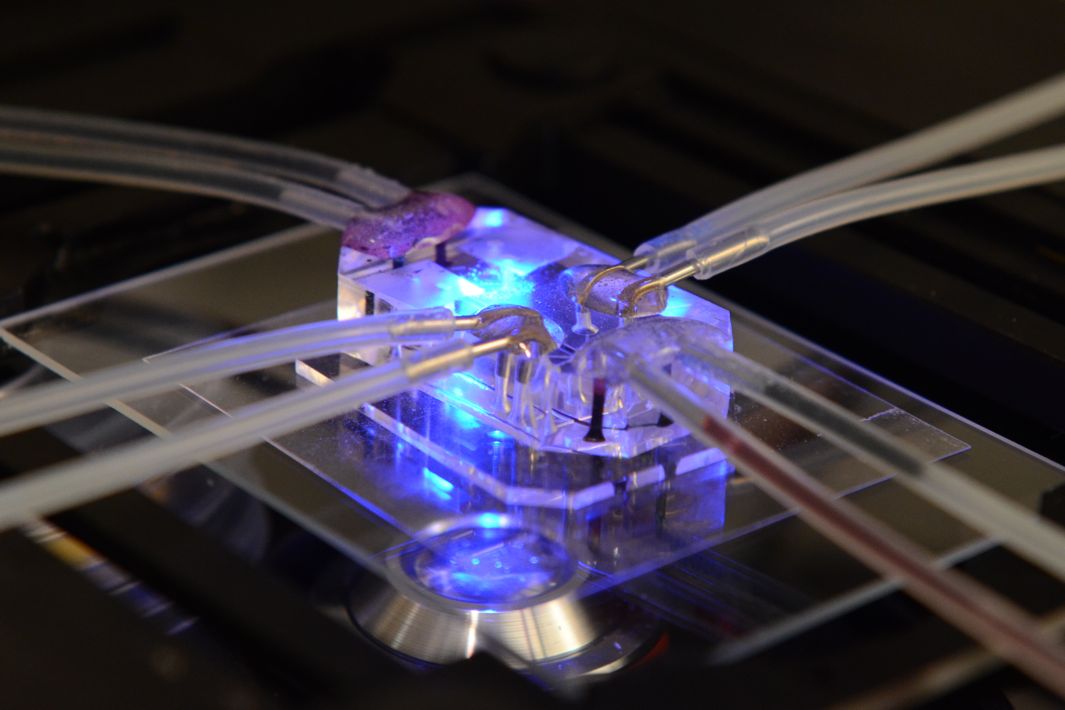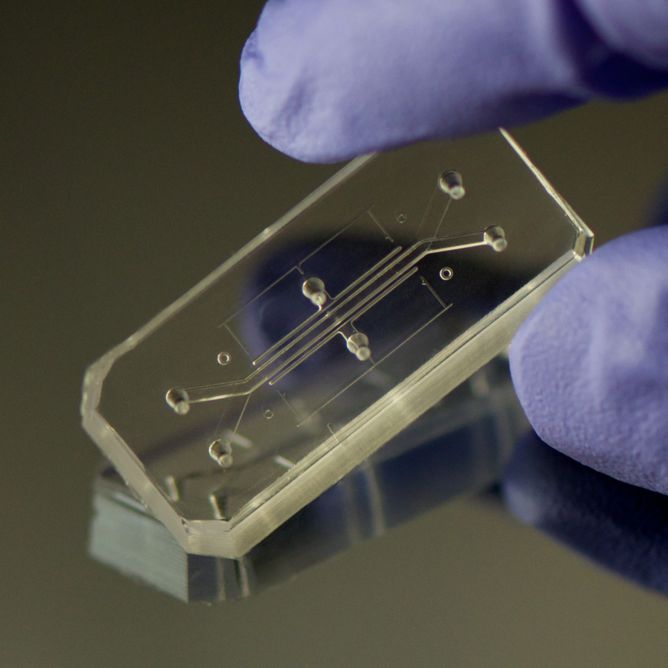Could These Microchips That Mimic Human Organs End Animal Testing?

Courtesy of the Wyss Institute/Design Museum London
This year’s eighth annual Design of the Year nominees from London’s Design Museum have highlighted diverse projects that help expand the definition of what design means, from a text message system for pregnant cows to an ad campaign promoting homely but delicious vegetables to reduce food waste.
But the overall 2015 winner, announced Monday, is the first time the museum has given top honors to a medical design: human “organs-on-chips,” designed by Donald Ingber and Dan Dongeun Huh at Harvard University’s Wyss Institute.
Organs-on-chips are lined with living human cells that mimic the tissue structures, functions, and mechanical motions of lungs, intestines, kidneys, and other organs. These innovative microdevices promise to accelerate pharmaceutical drug development by reducing costs associated with ethically fraught animal testing as well as providing more accurate results. Still in the experimental stages, the pioneering technology is now being worked on by researchers across the country.

Courtesy of the Wyss Institute/Design Museum London
The winning design was nominated by Paola Antonelli, senior curator of architecture and design and director of R&D at New York City’s Museum of Modern Art, which has acquired some of the chips, currently on display at the museum until January. In a press release, Antonelli called the project “the epitome of design innovation – elegantly beautiful form, arresting concept and pioneering application.”
In the release, Farshid Moussavi, an architect and professor at Harvard University Graduate School of Design, called the project “a fantastic example of a minute object that takes design away from simply being aesthetically pleasing to having a global impact on the way we will live in the future.”
Learn more about how the chips work in the video below:
Organs-on-a-Chip from Wyss Institute on Vimeo.
